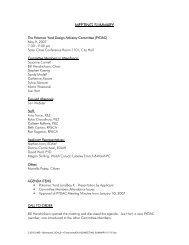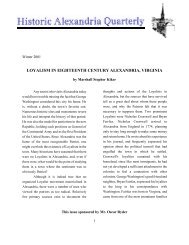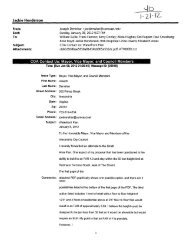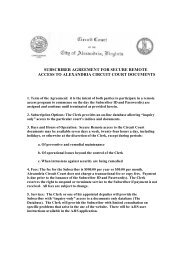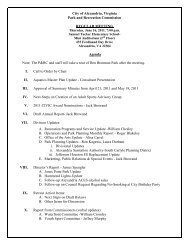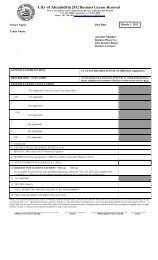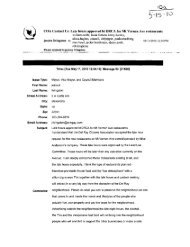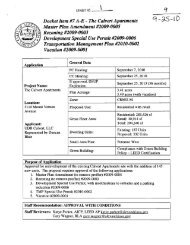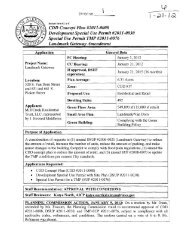Potomac Waterfront Flood Mitigation Study - City of Alexandria
Potomac Waterfront Flood Mitigation Study - City of Alexandria
Potomac Waterfront Flood Mitigation Study - City of Alexandria
Create successful ePaper yourself
Turn your PDF publications into a flip-book with our unique Google optimized e-Paper software.
FLOOD<br />
ELEVATION<br />
BASE FLOW<br />
Overview <strong>of</strong> <strong>Flood</strong> <strong>Mitigation</strong> Measures<br />
Figure 3-4: LAG Elevated to Protect Building from <strong>Flood</strong>ing<br />
A raised patio is a patio that would be rebuilt at a new, higher elevation to prevent the flow <strong>of</strong><br />
floodwaters into the structure. Other localized flood barriers can be designed to accomplish the<br />
same effect if a patio is not an option, including localized yard berms and small privacy walls<br />
that are designed to be floodwalls. The raised patio or other localized flood barrier must be<br />
designed by a registered architect, engineer, or other certified pr<strong>of</strong>essional who is responsible for<br />
ensuring that the design prevents flooding.<br />
Two main differences need to be considered when evaluating dry floodpro<strong>of</strong>ing for residential<br />
structures verses for commercial structures. The first difference is that dry floodpro<strong>of</strong>ing a<br />
residential structure does not remove it from the FEMA floodplain and, thus, does not alleviate<br />
the requirement for flood insurance. However, dry floodpro<strong>of</strong>ing can be used to remove<br />
commercial structures from the FEMA floodplain. In addition, for a floodpro<strong>of</strong>ed structure to be<br />
removed from the FEMA floodplain, it is important that any construction that is below the BFE<br />
meet the FEMA criteria for flood damage resistance. For more information, refer to FEMA<br />
Technical Bulletin 2 (August 2008).<br />
Most wall materials, including brick, will leak unless constructed or modified using special<br />
waterpro<strong>of</strong>ing techniques. Care should be taken when applying a sealant to the outside <strong>of</strong> a brick<br />
wall. Waterpro<strong>of</strong>ing compounds can deteriorate or fail if exposed to floodwater for extended<br />
periods <strong>of</strong> time. In addition, sealants may also be subject to damage, particularly in areas that<br />
experience high velocity floodwaters, or waters containing debris or ice.<br />
<strong>Flood</strong>pro<strong>of</strong> membranes or coatings can also affect the aesthetic quality <strong>of</strong> a building. Clear<br />
coatings, such as epoxies and polyurethanes, are generally not as effective as cement or asphalt<br />
based coating. Therefore, the aesthetic appeal <strong>of</strong> a brick wall is lost with the use <strong>of</strong> higher quality<br />
sealants. One way to solve this problem is to add an additional layer <strong>of</strong> brick to the structure with<br />
the sealant located between it and the original brick surface. However, this is not considered an<br />
appropriate technique for historic structures.<br />
<strong>Flood</strong>pro<strong>of</strong>ing the walls <strong>of</strong> a structure by applying a membrane or coating to the surface could be<br />
considered for almost all <strong>of</strong> the floodprone buildings in the study area. However, without careful<br />
care and maintenance, these sealants may still leak. In addition, it is difficult to use this<br />
floodpro<strong>of</strong>ing method without compromising the building aesthetics. Modifications would<br />
require review and approval by the <strong>City</strong>’s Board <strong>of</strong> Architectural Review, since the focus area is<br />
within the designated historic district. Therefore, floodpro<strong>of</strong> membranes or coatings have not<br />
been considered as an option for this study.<br />
28-JUL-10\\ 3-5






